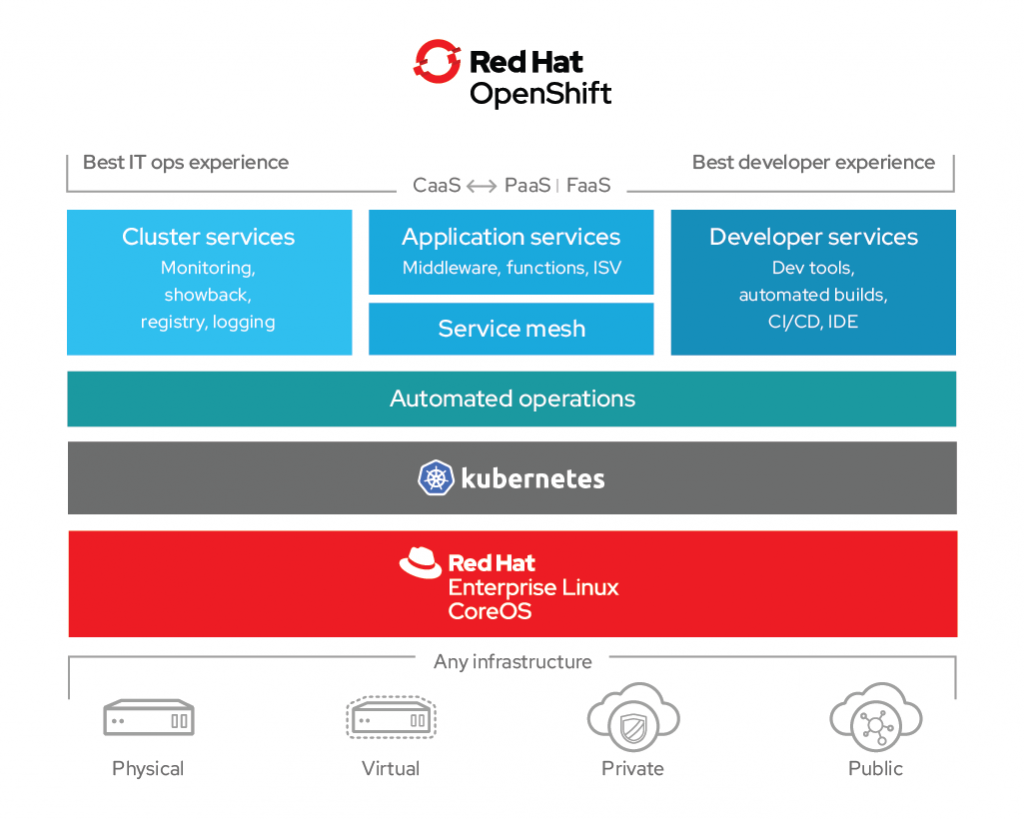Red Hat Simplifies Deploying and Managing OpenShift
At the Red Hat Summit 2019 conference, Red Hat today unveiled Red Hat OpenShift 4, the latest version of its container-based platform for building and deploying applications based on Kubernetes.
Joe Fernandes, vice president of cloud platforms products, says with Red Hat OpenShift 4 his company is squarely focused on making Kubernetes more accessible to the average IT administrator.
 New capabilities include tools that simplify deployment of Red Hat OpenShift 4, as well as additional operators certified by Red Hat to automate a variety of management tasks once OpenShift is deployed. Operators were developed by CoreOS, which Red Hat acquired early in 2018, and are a series of management applications that leverage the Kubernetes application programming interfaces (APIs) to automate, for example, deployment of a database on top of Kubernetes.
New capabilities include tools that simplify deployment of Red Hat OpenShift 4, as well as additional operators certified by Red Hat to automate a variety of management tasks once OpenShift is deployed. Operators were developed by CoreOS, which Red Hat acquired early in 2018, and are a series of management applications that leverage the Kubernetes application programming interfaces (APIs) to automate, for example, deployment of a database on top of Kubernetes.
Red Hat is simultaneously making a case for deploying Red Hat OpenShift on either Red Hat Enterprise Linux (RHEL) or Red Hat Enterprise Linux CoreOS, which is a lighter-weight variant of a Linux operating system based RHEL that incorporates capabilities originally developed by CoreOS for its distribution of Linux. RHEL is the dominant Linux distribution in the enterprise today, but many organizations that are deploying Kubernetes and containers prefer to rely on a lighter-weight operating system because many of the functions once provided by the operating system are now handled by containers and Kubernetes. Because organizations are at varying levels of maturity in terms of Kubernetes adoption, Fernandes says Red Hat sees a need to support multiple operating systems for its distribution of Kubernetes.
As part of that effort, Red Hat this week also committed to making Red Hat OpenShift 4 available on public clouds from Alibaba, Amazon Web Services (AWS), Google Cloud, IBM and Microsoft, as well as on private cloud technologies such OpenStack, virtual machines and bare-metal servers. Red Hat is betting more organizations will prefer to rely on a common instance of Kubernetes that runs identically from the cloud to the network edge rather than being locked into a specific distribution of Kubernetes that has been extended to a single platform.
Fernandes says Red Hat already has more than 1,000 OpenShift customers. By making Red Hat OpenShift more accessible, Red Hat is clearly pushing to expand adoption of its platform rapidly, at a time when many organizations don’t have a lot of Kubernetes expertise. While Kubernetes is widely adopted in the enterprise, very few organizations have stood up more than two clusters. The race is now on between Red Hat and its rivals to find ways to operationalize Kubernetes in a way that makes it much easier to deploy Kubernetes at scale.
It remains to be seen which vendor will win that race. However, once Red Hat officially becomes a unit of IBM, chances are high it will have enough momentum to remain at the front of the pack.




